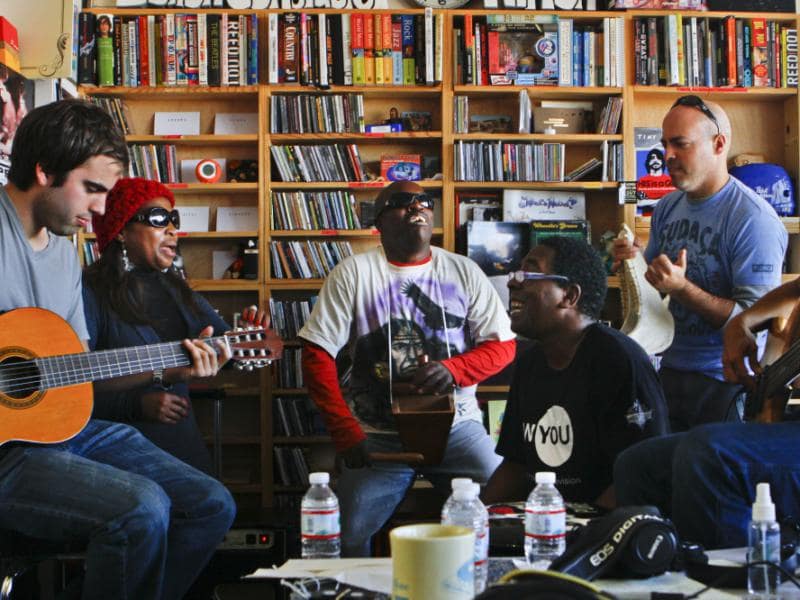One of the advantages of the island of Cuba is its music. It is characterized for having a characteristic and very funny son.
That’s why we want you to know which Cuban musical instruments are used the most. In addition, you will learn what each one contributes to the creation of the most outstanding Cuban melodies.
What are Cuba’s instruments?
Music and dance are very important pillars of Cuban culture. The diversity of genres offers rhythm, color and flavor to each of the tunes. Those who visit the island are amazed at the way the music makes all its people move.
Tourists are attracted by the way Cubans use Cuban string instruments, for example. On the other hand, in recent years, the Cuban Institute of Music has researched which are the top ten Cuban instruments.
We are going to present you the best percussion instruments of Cuba and the aerophonic instruments of Cuba. In this way, if you travel to the island, you will be familiar with Cuba’s most emblematic musical instruments.
Cuba’s best-known musical instruments
Cuba’s musical instruments are very varied and used all over the world. Next, the most recognized ones will be presented from all over the world. Perhaps you would like to learn how to play one of the following musical instruments.
Harmonic
The Cuban harmonica is an instrument that became more known to the whole world thanks to Compay Segundo. This Cuban musician of long trajectory was one of the best known artists of his time. Thanks to him, the harmonica became popular among local people.
This instrument was created in 1924 by the aforementioned artist. He did it with the intention of creating a hybrid, which had the characteristics of the Cuban tres and the guitar. But the difference is that a seventh string was added in the middle.
The harmonica is intended to imitate the timbre of the Cuban tres, but with the insertion of an octave string. Specifically in the third string, i.e. SOL. This instrument is part of the 10 most recognized Cuban musical instruments for its beauty.
It is tuned in the same way as the guitar, with the first string in MI, second in SI, and third and fourth in SOL. The difference is that it must be an octave higher than the third, which is common on the guitar.
The last thing to do to tune the harmonic is to tune the 3 strings of the strings. But the tuning of these strings must be in RE, LA and MI. But they must be one octave above the guitar.
Bongo
It is one of the most used instruments in Cuban music. The bongo is a membranous instrument or membranophone. The vibrations are produced in a membrane made of leather or synthetic materials. This instrument is formed by two small drums that have the shape of a cone trunk. One of the two is smaller and are joined together.
The membrane is made of hairless leather and are in the widest part of the 2 ends. A metal ring tightens together with metal keys the membrane of the instrument.

It is played directly with the hands, a function performed by the bongosero. This sitting artist places the bongo between his knees. He then positions the larger bongo on his right and the smaller bongo on his left. Making a perfect angle of 45 degrees.
Rumba box
It is one of the musical instruments of Cuba of greater interest on the part of the tourists. They are rhythmic percussion instruments that are composed of a wooden box. The rumba cajones are divided by modality. Among them are the rumba tumbadora box, the bass box and the cajita. This musical instrument is played with the hands by the performer.
In the beginning these boxes were made with the recycling of the boxes that arrived in Cuba with cod. After they were discarded, the locals used them to make musical instruments, hence the Cuban rumba box.
The boxes containing a large quantity of merchandise were ideal for the tumbadora. The smaller ones for the fifth, in addition two aleves spoons were perfect for harpsichords.
Bata
The bata is one of the known instruments of Cuba, it consists of a double drum. It is made of wood from the island, in the shape of an hourglass.
One of the cones is longer than the one at the other end. Among Cuba’s musical instruments, the bata is considered a percussion instrument.
It is generally used in rites and religious festivities. Especially in Cuban, North American and Puerto Rican Santeria and in the Yoruba culture of Nigeria. But it is also used as popular Cuban musical instruments.
Conga
This Cuban national instrument is also known as tumbadora or tambor. It is a very used instrument in the Cuban culture. It is one of the percussion instruments of Cuban musical instruments. In addition, it is considered like the bongo a membranophone instrument.
The conga is not only used within Cuban music, but also in other genres. In Latin America this instrument is indispensable for merengue and salsa. This has been quickly and consistently internationalized.
The conga comes from the African culture, it is similar to the drums of those peoples. These are made with a hollowed trunk and a skin nailed in the opening of one of the ends.
By the year 1940, this instrument became known to the inhabitants of Cuba. It was designated this way, following the artistic lines of the music of the moment. By then, conga and mambo were the most listened to musical genres.
